
Soil Preparation
Before you can start planting vegetables in your garden you should prepare your soil. Soil preparation consists of cleaning up the area and adding amendments. This should be done before planting so it can give the new plants the nutrients they need for the growing season and to take away anything that might restrict their growth.

Plant Spacing, Planting Depth & Succession Planting
Plant spacing is the distance you should plant individual plants. Each plant has specific spacing requirements depending on their needs and growth habits. When planting you should keep in mind the appropriate spacing needed to prevent overcrowding which can lead to the decline of your plants. Properly spaces plants are able to grow to their full potential which will increase your yield.

Watering: Tips for Transplant Success
Watering new plants before transplanting is essential. Planting them in dry soil can put their survival at risk. Moist soil helps ensure a smooth transition to their new location, reducing the chances of transplant shock.

What is Companion Planting?
Companion planting is a gardening technique where different plants are grown close together to benefit each other in various ways. This method can improve plant health, reduce pest problems, and enhance the overall growth and yield of the garden.

Vegetable Companion Plants
Beets are head over heels for onions, cabbages, and potatoes. Meanwhile, cabbage is no fan of radishes. Welcome to the soap opera of companion planting!
If this is too much drama for you, we’ve got an easier way of visualizing it here:

Vegetable and Native Companion Plants
By creating a balanced ecosystem, native plants can attract beneficial insects and pollinators, ultimately boosting the productivity of your garden and increasing the yield of fruits and vegetables.
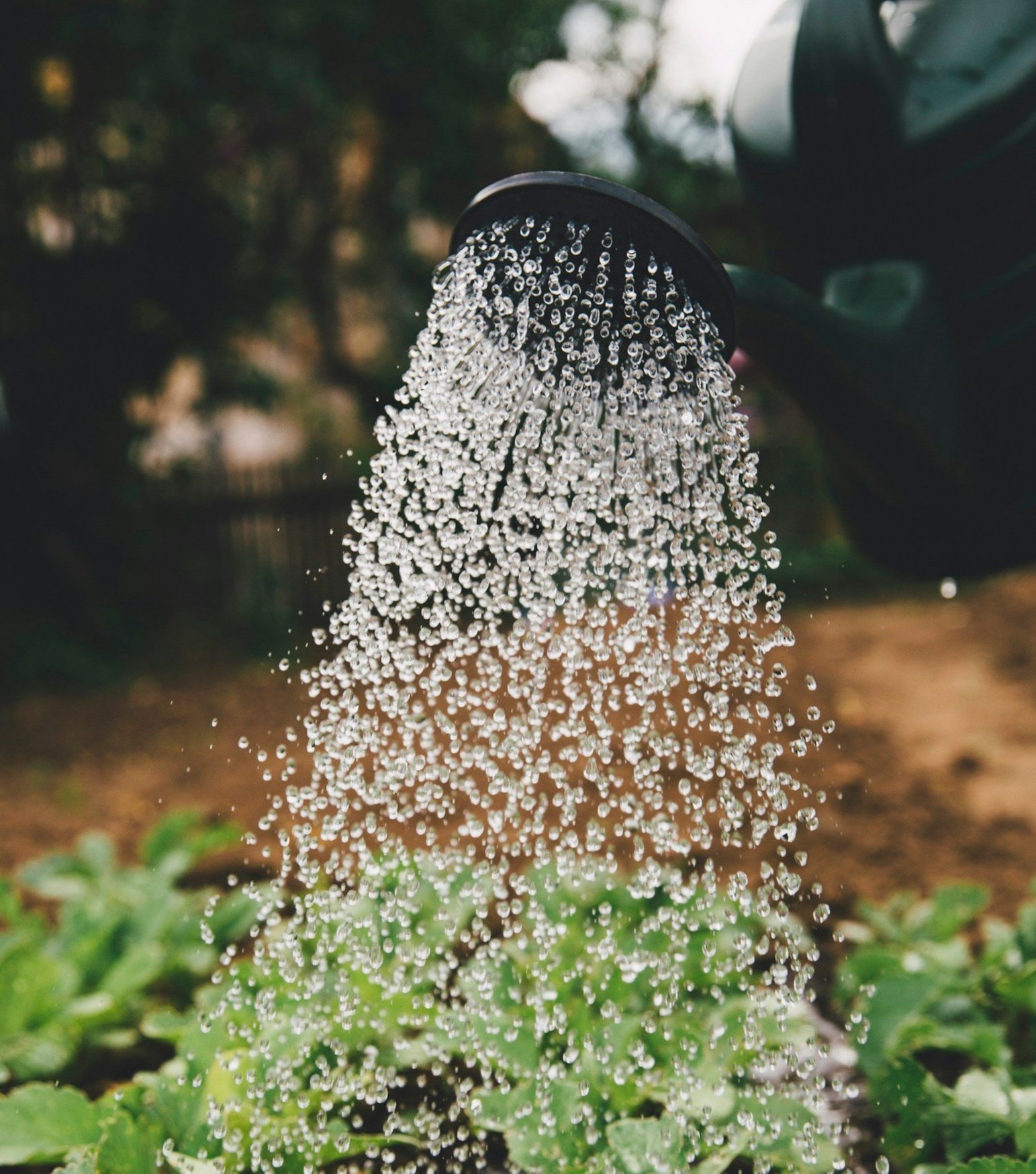
Watering
For a lot of new gardeners watering their garden causes some anxiety, this is by far the most frequent asked question we get. When should I water? How much do I water? How do I know when I watered too much? We can see how this may cause some stress, after all watering is a crucial aspect of maintaining a healthy vegetable garden. Here are some detailed tips to ensure your plants get the right amount of water.

Weeding and Mulching
What truly defines a "weed"? It's a curious question. Essentially, a weed is any plant growing in a place where it's not desired. Even the loveliest flowers can take on the label of "weed" if they appear in the wrong spot. The term itself doesn't inherently describe the plant's value, it’s all about perspective. Your garden is your canvas, and you decide what belongs.

Staking & Support
Providing your plants with support has many benefits for the health of the plant and the yield they produce. Staking your plants will make sure they won’t sprawl and will keep them tidy making more space for other plants to grow to their full potential too.
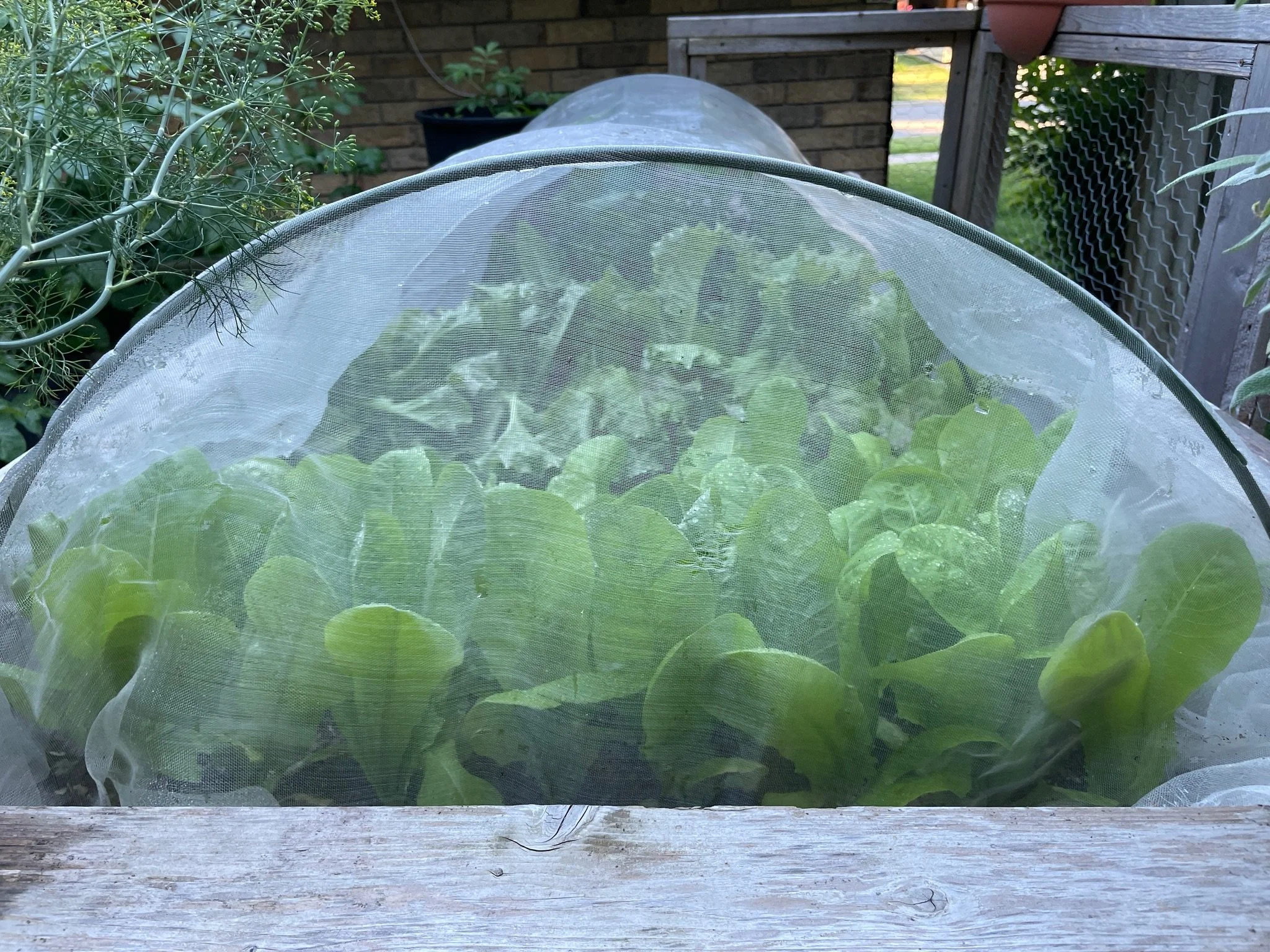
Pest Control and Prevention
Pests are almost unavoidable in outdoor gardening. After years of vegetable gardening, we have found some environmentally friendly alternatives to pesticides. From physical barriers to natural predators, there are solutions to your pest problems.
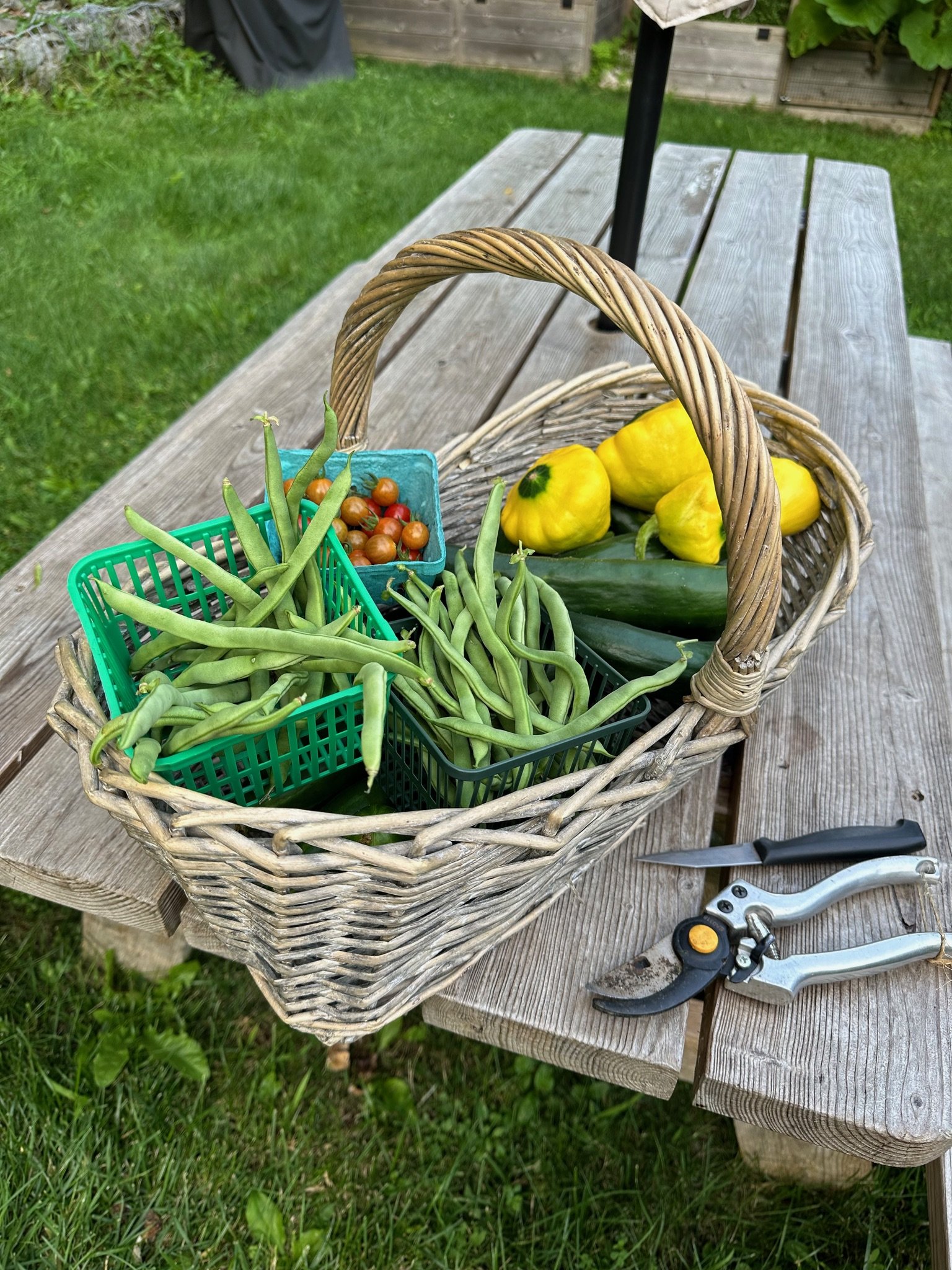
Harvesting Food
Harvesting your produce is the highlight of the gardening season for most gardeners! If it's your first time vegetable gardening, there's nothing quite like the thrill of harvesting your first crop. Trust me, that first cucumber you pick will be the best tasting one you've ever had.

Harvesting Wild Leek in Your Garden
If you’re fortunate enough to have wild leek thriving in your garden—or you’ve carefully cultivated your own ramp patch—you may be wondering how to harvest them properly. Since ramps are only around for a short window (typically mid-April to mid-May), making the most of their season while keeping your plants healthy is key.

Harvesting Seeds
Harvesting seeds is another important part of your seasonal garden calendar! If you enjoyed your produce and would like to plant it again, you can simply save some seeds for next year, especially if they were hard to come by initially.

Dehydrated Wild Leek Spice
Preserving wild leek greens through dehydration is a simple process that ensures you have flavourful additions for your recipes year-round. Follow these steps to prepare and store them properly.

Dehydrated Wild Leek Crackers
Dehydrated to perfection, these wild leek crackers deliver a vivid green hue and an unforgettable taste. A must-try for adventurous food lovers!

Wild Leek Oil
Elevate your dishes with a burst of fresh, vibrant flavor! This beautifully infused wild leek oil isn’t just delicious - it’s a stunning shade of bright green that adds visual appeal to any plate. Drizzle it over your favorite dishes for an instant upgrade in taste and presentation
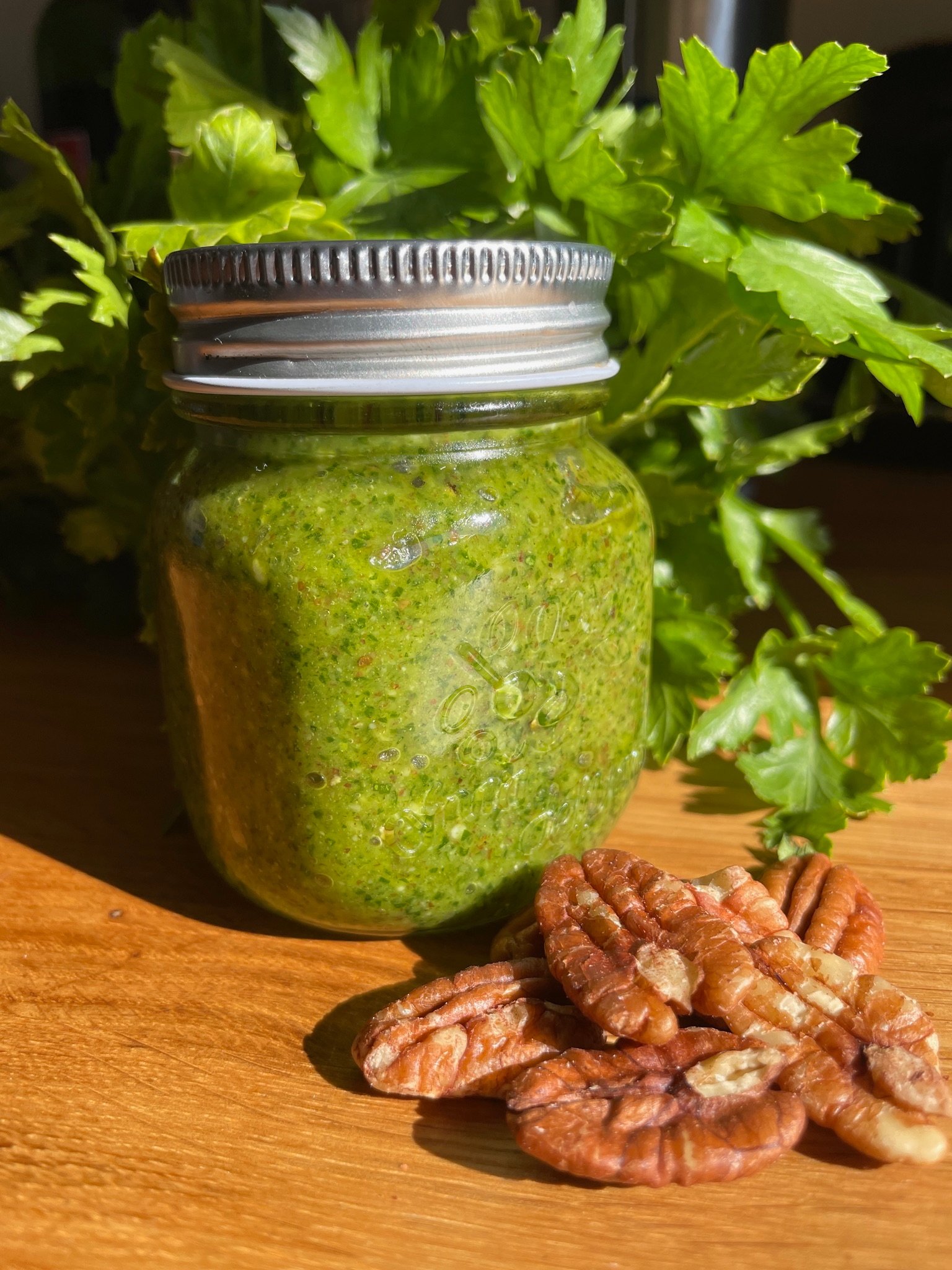
Parsley Pecan Nut Pesto
Everyone loves the classic Basil and Pine Nut Pesto, but if your garden is overflowing with parsley, why not try this absolutely delicious Parsley Pecan Pesto instead?

Rhubarb Butter
A lovely Austrian Rhubarb Butter Recipe we’ve picked up on our travels around the globe. Sweet. Tangy. Irresistible. This rhubarb butter blends fresh spring rhubarb, crisp apple, and a hint of warm spice, all naturally sweetened with honey. Spread it on toast, swirl it in yogurt or oatmeal, or spoon it straight from the jar. We won’t judge!
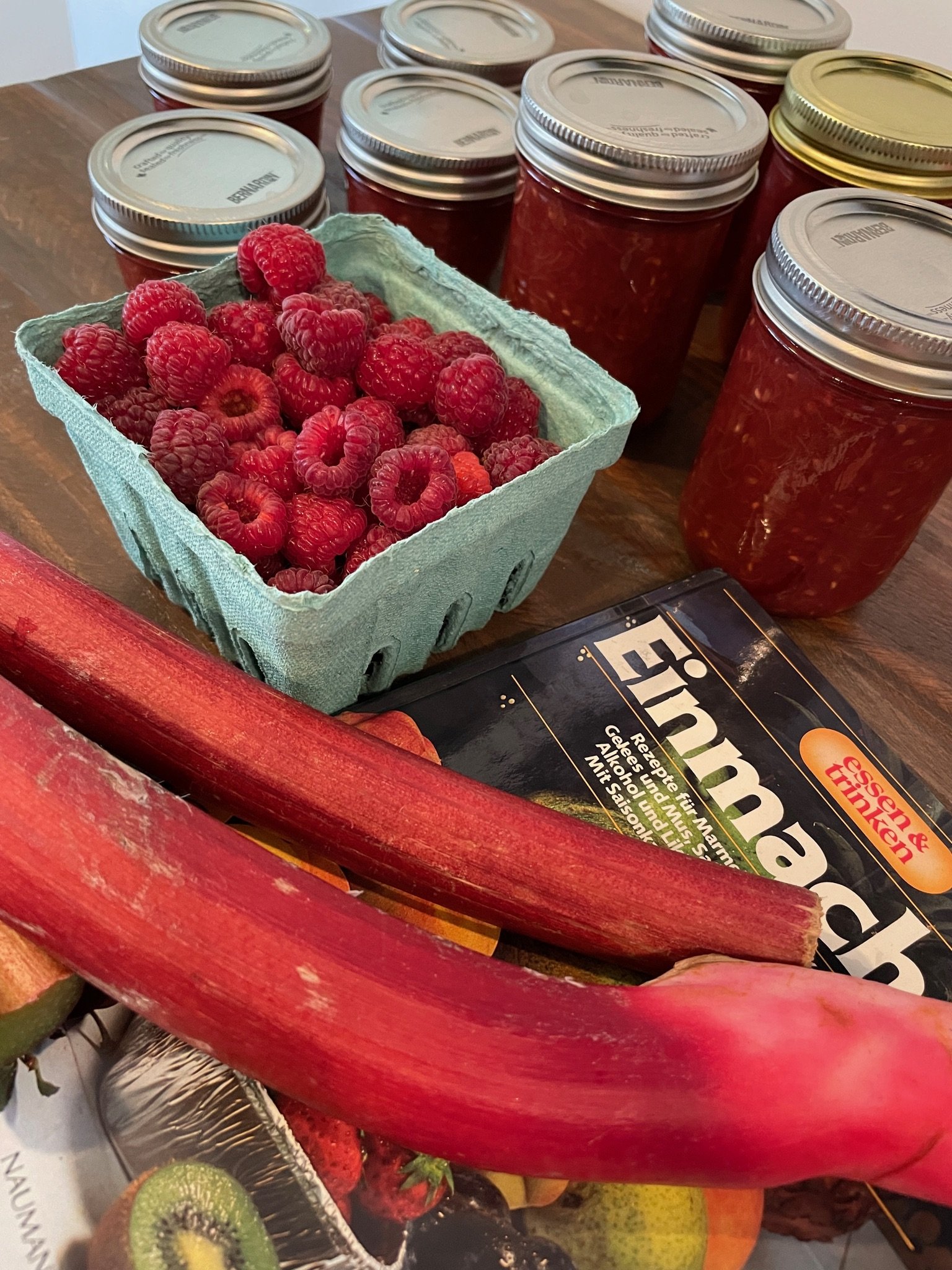
Rhubarb and Raspberry Jam
This is a German recipe from our Oma, which we translated into English for you. It’s more a preserve (Konfitüre) than a traditional jam, so it will be a little runnier than jam you may be used to. If possible, choose a red rhubarb variety so that the jam gets a nice colour.

Strawberry & Lemon Thyme Summer Jam
A sun-kissed twist on a classic, this jam brings together the lush sweetness of ripe strawberries with the citrusy, floral notes of lemon thyme, a garden herb often overlooked in sweet recipes. The result? A fragrant, jewel-toned preserve that tastes like summer in a jar.
